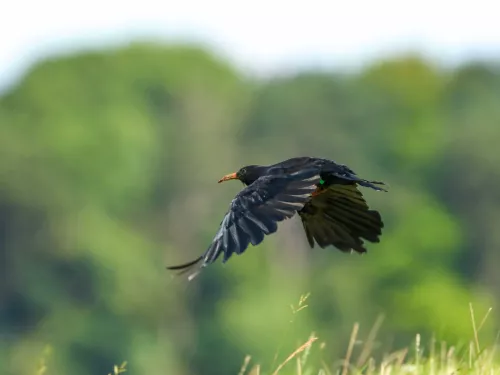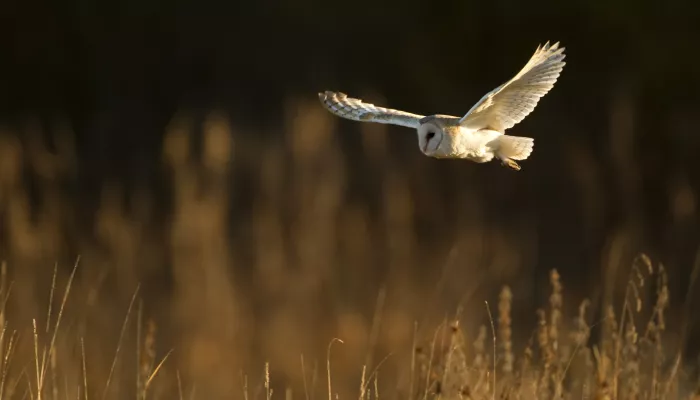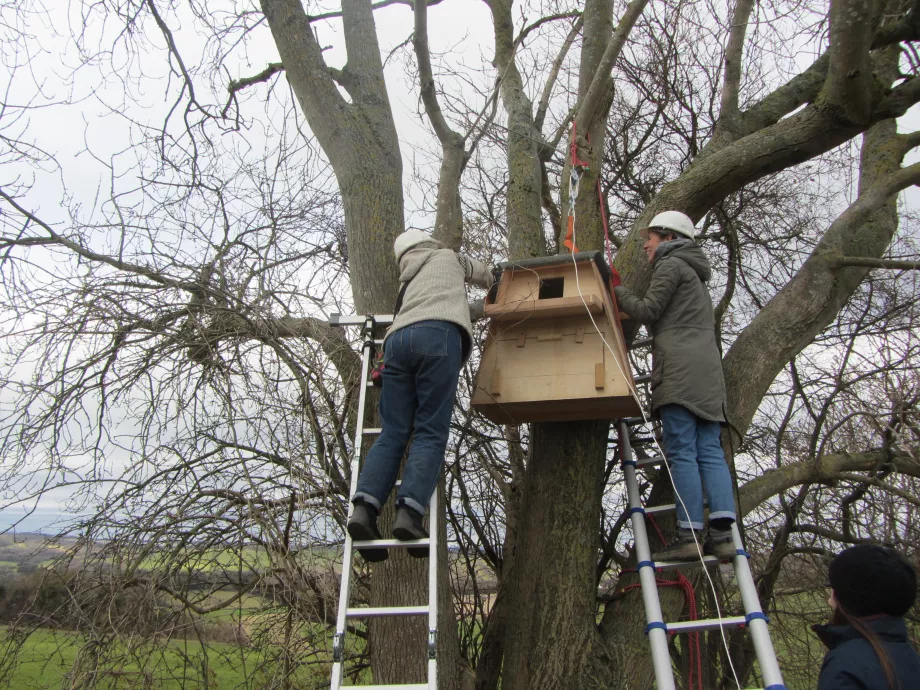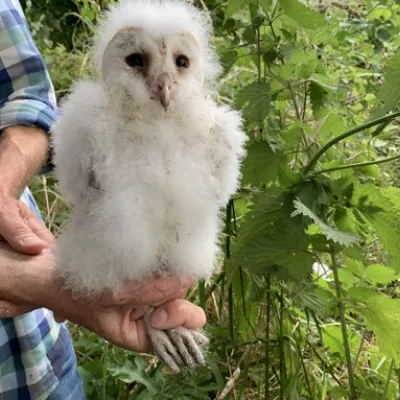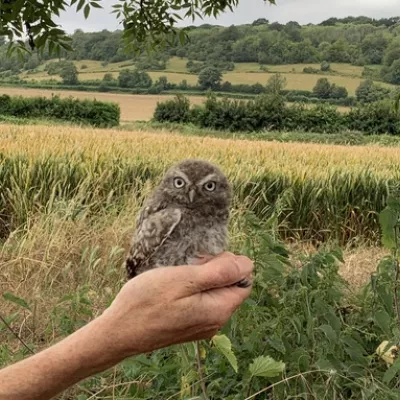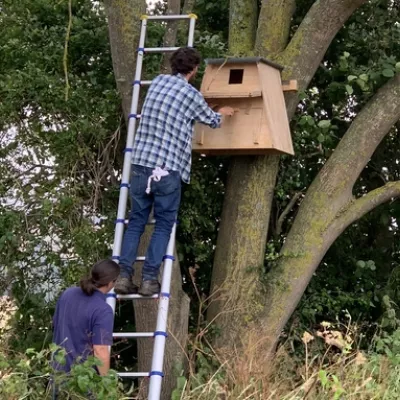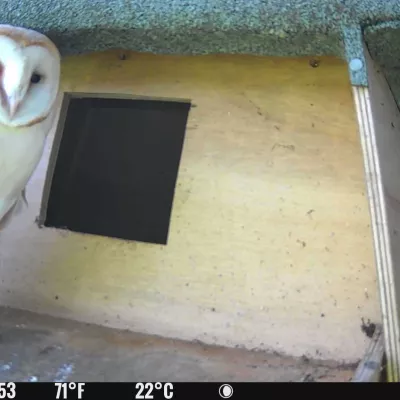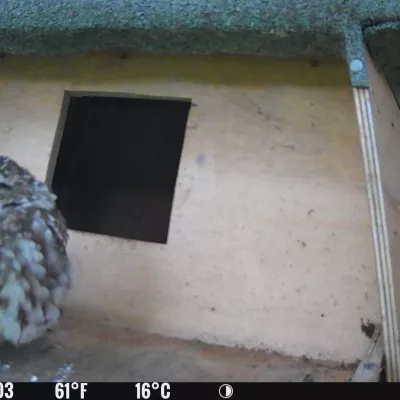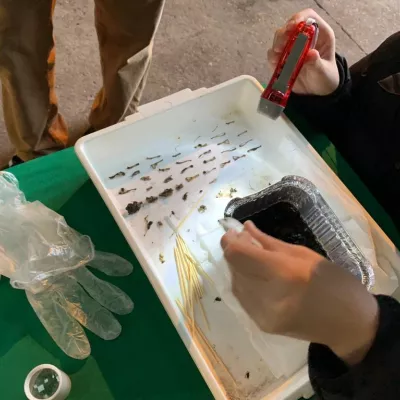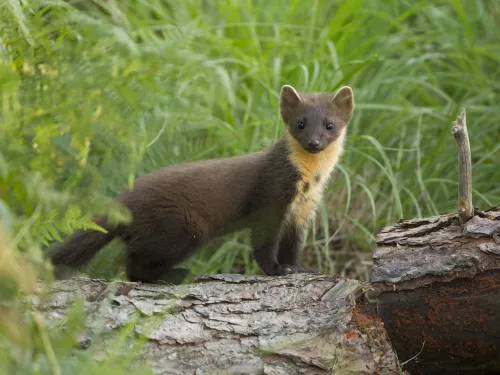Do you want to build an owl box?
If you feel inspired to create your own space for these beautiful birds, The Barn Owl Trust has loads of helpful information to support you to do so. It is important to note if you are considering making your own owl box that like many birds in the UK, barn owls are a protected species under the Wildlife and Countryside Act (1981), and it is therefore illegal to disturb them unless licensed to do so.
Species recovery
This re-creation of space for nature, through installation of boxes along with further habitat restoration through more environmentally friendly farming practices, is fundamental to improving biodiversity in the area. Not only are the barn owls themselves thriving, but so is the ecosystem they form part of. For instance, a key species for the Darent Valley Landscape Recovery Pilot, water voles are in severe decline in the UK. Improving the state of our farmland and rivers supports protection of these animals. They in turn are prey for the owls, along with other small mammals such as shrews and mice. Other key species within the project are also benefitting from this habitat restoration, such as yellowhammer, adder and brown trout.
Nationally, the barn owl’s resurgence as a result of positive human activity in the form of man-made boxes is promising. This approach is one we must take to right the wrongs of historical and ongoing human impact on the natural world, and one that we are delivering through collaborations such as the Barn Owl Project and the Darent Valley Landscape Recovery. Our latest update from the trail camera in early December is an exciting one and a first for the new boxes; two barn owls in the same shot. Our hope; that they continue to flourish across the Darent Valley and again become a regular sight at dusk and dawn. Poised ghostly on a post or sweeping low across the land, head down, hunting. Light in the dark.
